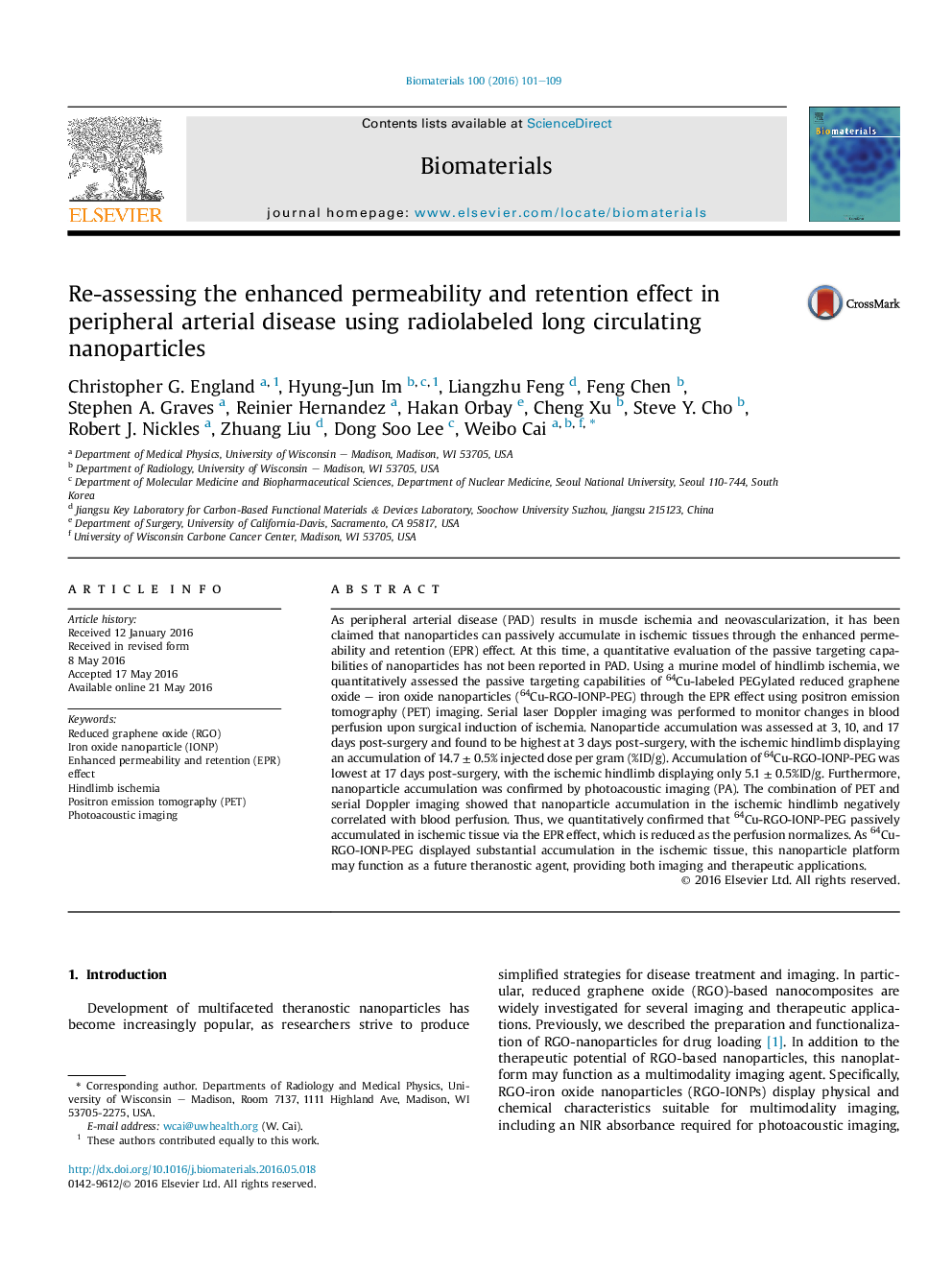| کد مقاله | کد نشریه | سال انتشار | مقاله انگلیسی | نسخه تمام متن |
|---|---|---|---|---|
| 6484917 | 368 | 2016 | 9 صفحه PDF | دانلود رایگان |
عنوان انگلیسی مقاله ISI
Re-assessing the enhanced permeability and retention effect in peripheral arterial disease using radiolabeled long circulating nanoparticles
ترجمه فارسی عنوان
بررسی دوباره نفوذپذیری افزایش یافته و اثر احتباس در بیماریهای شریانی محیطی با استفاده از نانوذرات تابشی طولانی با رادیواکتیو
دانلود مقاله + سفارش ترجمه
دانلود مقاله ISI انگلیسی
رایگان برای ایرانیان
کلمات کلیدی
موضوعات مرتبط
مهندسی و علوم پایه
مهندسی شیمی
بیو مهندسی (مهندسی زیستی)
چکیده انگلیسی
As peripheral arterial disease (PAD) results in muscle ischemia and neovascularization, it has been claimed that nanoparticles can passively accumulate in ischemic tissues through the enhanced permeability and retention (EPR) effect. At this time, a quantitative evaluation of the passive targeting capabilities of nanoparticles has not been reported in PAD. Using a murine model of hindlimb ischemia, we quantitatively assessed the passive targeting capabilities of 64Cu-labeled PEGylated reduced graphene oxide - iron oxide nanoparticles (64Cu-RGO-IONP-PEG) through the EPR effect using positron emission tomography (PET) imaging. Serial laser Doppler imaging was performed to monitor changes in blood perfusion upon surgical induction of ischemia. Nanoparticle accumulation was assessed at 3, 10, and 17 days post-surgery and found to be highest at 3 days post-surgery, with the ischemic hindlimb displaying an accumulation of 14.7 ± 0.5% injected dose per gram (%ID/g). Accumulation of 64Cu-RGO-IONP-PEG was lowest at 17 days post-surgery, with the ischemic hindlimb displaying only 5.1 ± 0.5%ID/g. Furthermore, nanoparticle accumulation was confirmed by photoacoustic imaging (PA). The combination of PET and serial Doppler imaging showed that nanoparticle accumulation in the ischemic hindlimb negatively correlated with blood perfusion. Thus, we quantitatively confirmed that 64Cu-RGO-IONP-PEG passively accumulated in ischemic tissue via the EPR effect, which is reduced as the perfusion normalizes. As 64Cu-RGO-IONP-PEG displayed substantial accumulation in the ischemic tissue, this nanoparticle platform may function as a future theranostic agent, providing both imaging and therapeutic applications.
ناشر
Database: Elsevier - ScienceDirect (ساینس دایرکت)
Journal: Biomaterials - Volume 100, September 2016, Pages 101-109
Journal: Biomaterials - Volume 100, September 2016, Pages 101-109
نویسندگان
Christopher G. England, Hyung-Jun Im, Liangzhu Feng, Feng Chen, Stephen A. Graves, Reinier Hernandez, Hakan Orbay, Cheng Xu, Steve Y. Cho, Robert J. Nickles, Zhuang Liu, Dong Soo Lee, Weibo Cai,
